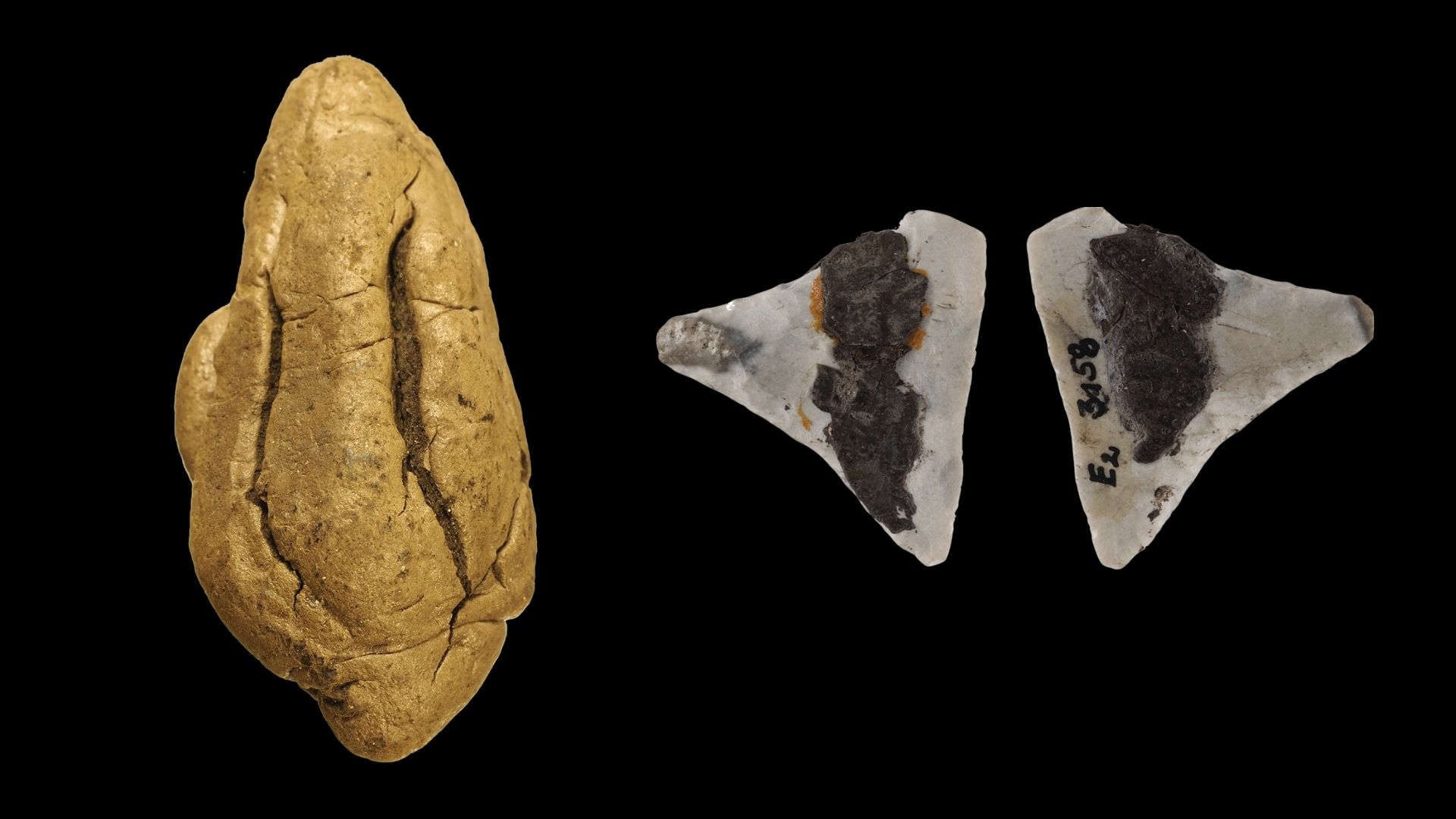Science
Ancient Chewing Gum Offers Insights into Gender Roles in Europe

A recent study conducted by researchers from the University of Copenhagen has uncovered significant insights into the division of labor between genders in Neolithic Europe. The team analyzed ancient birch tar wads, often considered to have been used as a form of “chewing gum,” which date back over 6,000 years. This research highlights how these communities functioned during the Neolithic Age and offers a glimpse into their daily lives.
The birch tar, known as the oldest synthetic material in the world, was primarily found in the European Alps. It was utilized not only for medicinal purposes due to its natural antimicrobial properties but also for practical applications such as crafting stone tools, repairing pottery, and even as a daily chewing substance. According to the research team, led by archeologist Anna White, the exact reasons for chewing birch tar remain speculative, though its potential health benefits are acknowledged.
Research Methodology and Findings
The research involved the analysis of 30 birch tar artifacts retrieved from nine archaeological sites, primarily from lake settlements. Of these, twelve pieces were identified as loose wads showing clear signs of chewing. The preservation qualities of tar allowed the researchers to extract saliva, food remnants, and even DNA from 19 samples. This DNA analysis provided a unique window into the daily activities of both male and female members of these ancient communities.
Among the findings, the presence of DNA from linseed (Linum usitatissimum) and poppy seeds (Papaver somniferum) was noted, although it remains uncertain if the latter was consumed for its nutritional value or for its psychoactive properties. The research team concluded that the presence of both human and oral microbial DNA indicates that the birch tar was indeed chewed, possibly by multiple individuals.
This analysis allowed the researchers to determine the gender of individuals who used the tar, shedding light on gender-specific roles during this period. Male DNA was predominantly found in tar used as an adhesive on ten stone tools, while female DNA was associated with tar used to create three pottery items. These findings led to the inference that men were primarily involved in tool-making, whereas women focused on pottery production.
Implications of the Study
The researchers also suggested that Neolithic humans might have chewed the tar to soften it, as the material tends to harden upon cooling. The introduction of saliva could diminish its adhesive properties, which could explain the lower amounts of oral microbial DNA found in the hafted stone tools and pottery compared to the chewed pieces. This insight provides a unique perspective on the practical applications of birch tar in everyday life.
Given the scarcity of human remains from the Neolithic period, ancient chewing gum serves as a valuable resource for understanding aspects of prehistory that would otherwise be lost. The study was published in the Proceedings of the Royal Society B, marking a significant contribution to the field of archaeology and our understanding of gender dynamics in early human societies.
This research not only enhances our knowledge of the past but also emphasizes the innovative ways in which ancient communities interacted with their environment and each other.
-

 Business4 days ago
Business4 days agoUK to Finalize Stablecoin Regulations by 2026, Boosting Crypto Sector
-

 Business5 days ago
Business5 days agoU.S. and U.K. Target Cybercriminal Networks, Seize $15 Billion
-

 World4 days ago
World4 days agoMilitary Artillery Plan Sparks Safety Concerns Along California Highway
-

 Lifestyle5 days ago
Lifestyle5 days agoKISS OF LIFE’s Natty Dazzles in Micro-Shorts at Seoul Event
-

 World5 days ago
World5 days agoTrump Signals Reluctance to Sell Tomahawk Missiles to Ukraine
-

 Business5 days ago
Business5 days agoCalifornia to Eliminate All Plastic Bags from Stores by 2026
-

 Entertainment5 days ago
Entertainment5 days agoLouisiana Senate Raises Concerns Over Medicaid Cuts Amid New Bill
-

 Sports5 days ago
Sports5 days agoDomenico Doran’s Stellar Performance Leads Bishop Amat to Victory
-

 Entertainment5 days ago
Entertainment5 days agoUtah Communities Rally as Government Shutdown Strains Resources
-

 Sports5 days ago
Sports5 days agoTrade Low, Trade High: Key NHL Players to Consider Now
-

 Science2 days ago
Science2 days agoAncient Dinosaur Discovery in Argentina Reveals Evolutionary Insights
-

 Health2 days ago
Health2 days agoUncovering the Hidden Link Between Knee Pain and Hip Issues









